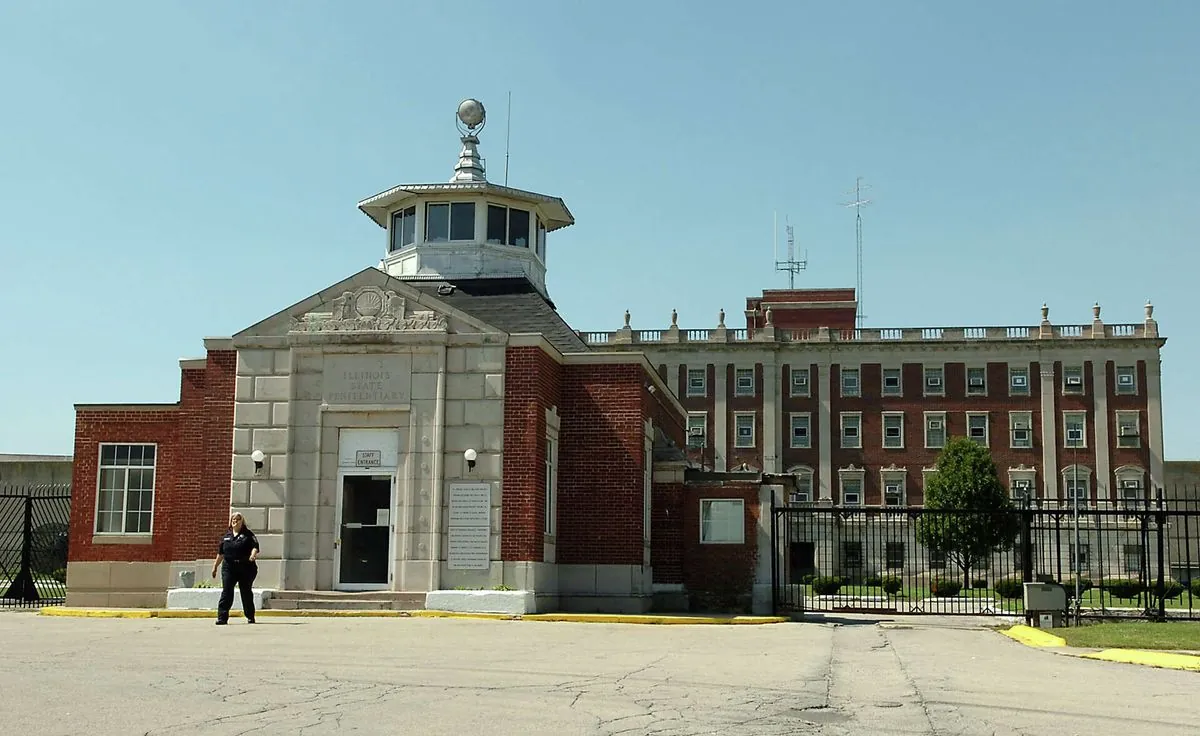In a significant development for Illinois' correctional system, the nearly century-old Stateville Correctional Center is slated for closure. This decision, part of a $900 million initiative to modernize the state's prison infrastructure, has sparked controversy and raised concerns among staff and service providers.
Stateville, located in Crest Hill near Chicago, has been a cornerstone of Illinois' prison system since its opening in 1925. Over its 99-year history, the facility has housed notorious inmates such as Leopold and Loeb, Richard Speck, and was the site of John Wayne Gacy's execution. The prison's unique architecture, including the now-closed F-House panopticon, has made it a subject of fascination and study.
The closure decision follows a federal court order issued on August 9, 2024, mandating the evacuation of most of Stateville's 430 inmates by September 30, 2024. This ruling came in response to a decade-long lawsuit challenging the prison's health and safety conditions. Latoya Hughes, acting Corrections Director, emphasized the necessity of this move, citing "serious safety and security concerns" for both staff and inmates.
The prison's deterioration is evident in its $286 million maintenance backlog, as reported in a May 2023 study. Issues range from falling concrete to contaminated water, highlighting the urgent need for action. However, the closure plan has met resistance from employees and service providers who fear disruptions to inmate programs and the potential loss of a highly experienced staff.
Rachel Ventura, a state senator from Joliet, has expressed concerns about the lack of transparency in the closure process. She noted the absence of clear timelines for demolition, groundbreaking, or staff relocation plans.
The proposed replacement facility, to be built on adjacent state-owned land, could take three to five years to complete. The plan also includes the possibility of a new women's prison and the relocation of Logan Correctional Center to the Stateville campus.
Stateville's closure marks the end of an era in American corrections. The prison's history is intertwined with significant events in criminal justice, including controversial malaria research experiments during World War II and its role as the last operational panopticon-style prison in the United States.
As Illinois moves forward with this ambitious project, balancing the need for modern, safe correctional facilities with the concerns of staff and the continuity of inmate services remains a significant challenge. The closure of Stateville represents not just the end of a historic institution, but also the beginning of a new chapter in Illinois' approach to incarceration and rehabilitation.
"That kind of commute round trip would take an enormous toll on my mind and body. It would take away from the precious time that I have with my family and friends. I speak for all my co-workers when I say that that may be nearly impossible to justify."
The coming months will be crucial as the state navigates the complex process of closing Stateville while planning for its future replacement, ensuring that the lessons learned from its long and controversial history inform the design and operation of the new facility.
